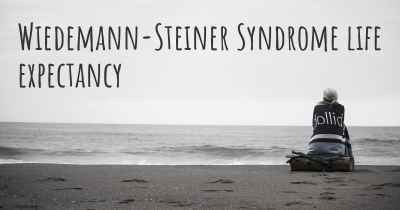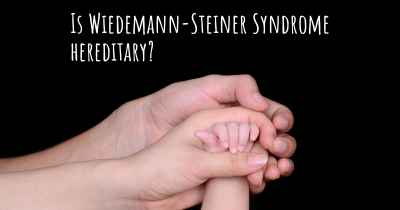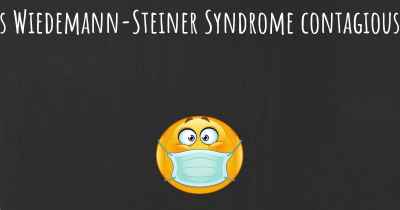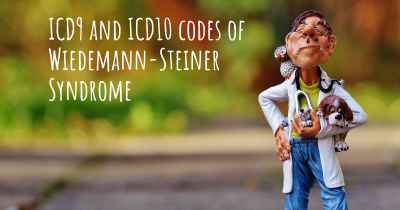Which are the symptoms of Wiedemann-Steiner Syndrome?
See the worst symptoms of affected by Wiedemann-Steiner Syndrome here
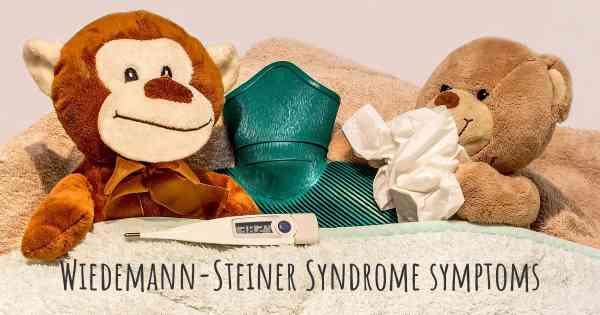
Wiedemann-Steiner Syndrome (WSS) is a rare genetic disorder that affects various systems of the body. It was first described in 1989 by Wiedemann and Steiner, hence the name. This syndrome is characterized by a range of physical and developmental abnormalities, which can vary in severity from person to person.
Symptoms of Wiedemann-Steiner Syndrome
The symptoms of Wiedemann-Steiner Syndrome can manifest in different ways and may include:
- Distinctive facial features: Individuals with WSS often have a unique facial appearance, which may include a broad nasal bridge, thick eyebrows, long eyelashes, widely spaced eyes, and a wide mouth.
- Growth and developmental delays: Children with WSS may experience delays in reaching developmental milestones such as sitting, crawling, walking, and talking. They may also have intellectual disability, learning difficulties, and speech delays.
- Hypertrichosis: Excessive hair growth, particularly on the forehead, face, and limbs, is a common feature of WSS. This can give affected individuals a distinctively hairy appearance.
- Skeletal abnormalities: Some individuals with WSS may have skeletal abnormalities, including short stature, scoliosis (curvature of the spine), and joint contractures (limited range of motion in joints).
- Behavioral and psychological issues: Individuals with WSS may exhibit behavioral problems such as hyperactivity, attention deficit hyperactivity disorder (ADHD), and autistic-like behaviors. They may also have difficulties with social interactions and exhibit anxiety or aggression.
- Seizures: Epileptic seizures can occur in some individuals with WSS. These seizures may vary in type and severity.
- Cardiac abnormalities: Some individuals with WSS may have congenital heart defects, such as atrial septal defects (ASDs) or ventricular septal defects (VSDs).
- Other physical features: Additional physical features that may be present in individuals with WSS include a small head size (microcephaly), widely spaced nipples, and fifth finger clinodactyly (curvature of the pinky finger).
It is important to note that not all individuals with Wiedemann-Steiner Syndrome will exhibit all of these symptoms. The severity and combination of symptoms can vary widely, even among affected family members.
Diagnosis and Management
Diagnosing Wiedemann-Steiner Syndrome can be challenging due to its rarity and the variability of symptoms. A clinical evaluation, including a detailed medical history and physical examination, is typically the first step. Genetic testing, such as chromosomal microarray analysis or targeted gene sequencing, may be recommended to confirm the diagnosis.
As Wiedemann-Steiner Syndrome is a genetic disorder, there is currently no cure. Treatment primarily focuses on managing the individual symptoms and providing supportive care. This may involve a multidisciplinary approach, including specialists such as geneticists, pediatricians, neurologists, orthopedic surgeons, and developmental therapists.
Early intervention programs can help address developmental delays and provide educational support tailored to the individual's needs. Occupational therapy, speech therapy, and physical therapy may be beneficial in improving motor skills, communication, and overall quality of life.
Regular medical follow-ups are essential to monitor the individual's growth, development, and overall health. Genetic counseling is also recommended for affected individuals and their families to understand the inheritance pattern and the risk of passing on the syndrome to future generations.
Conclusion
Wiedemann-Steiner Syndrome is a rare genetic disorder characterized by a range of physical, developmental, and behavioral abnormalities. The distinctive facial features, growth and developmental delays, hypertrichosis, skeletal abnormalities, behavioral issues, seizures, cardiac abnormalities, and other physical features are common symptoms associated with this syndrome. Early diagnosis, appropriate medical management, and supportive care can significantly improve the quality of life for individuals with WSS and their families.
Though it's possible this phenotypic variation is the result of differences in the details of exactly which nucleotide in the affected gene is modified, it's far more likely (IMNSHO) that the phenotype variation is the result of co-dependence effects from other, normally non-pathological, genetic variation in WSS individuals. We know that the WSS gene codes for a protein that serves as catalyst that is part of the human epigenetic metabolism/machinery. So it would make sense that dozens, maybe hundreds, or even thousands of other genes might have their expressions modified. And that, in turn, would likely have far-reaching impact on affected individual's phenotype.
AFAIK, the following may be the worst symptoms of WSS, ranked roughly in order of severity and/or long-term consequences; (this is mostly based upon what we've seen with my son, who seems to be more severely affected that average, and what I've read):
- Impaired intelligence
- Impaired speech, sometimes the complete or near absence of speech, and impaired language skills
- Hypotonia as infants
- Impaired coordination
- Partial cortical blindness may be present
- Inability to understand many safety issues
- Danger of elopement
- Lack of understanding that their actions may inadvertently harm someone nearby
- Inability to chew can sometimes be present
- Multiple food sensitivities
- Sensitivities to artificial food dyes
- Sleep apnea may be present (both obstructive due to hypotonia and central due to nervous-system imairment)
- GERD due to hypotonia as infants
- Delayed motor milestones as infants
On the plus side, affected individual often seem to have a happy disposition.
Posted Apr 20, 2017 by Mike 420
Posted Jan 16, 2018 by anonymous 3980
